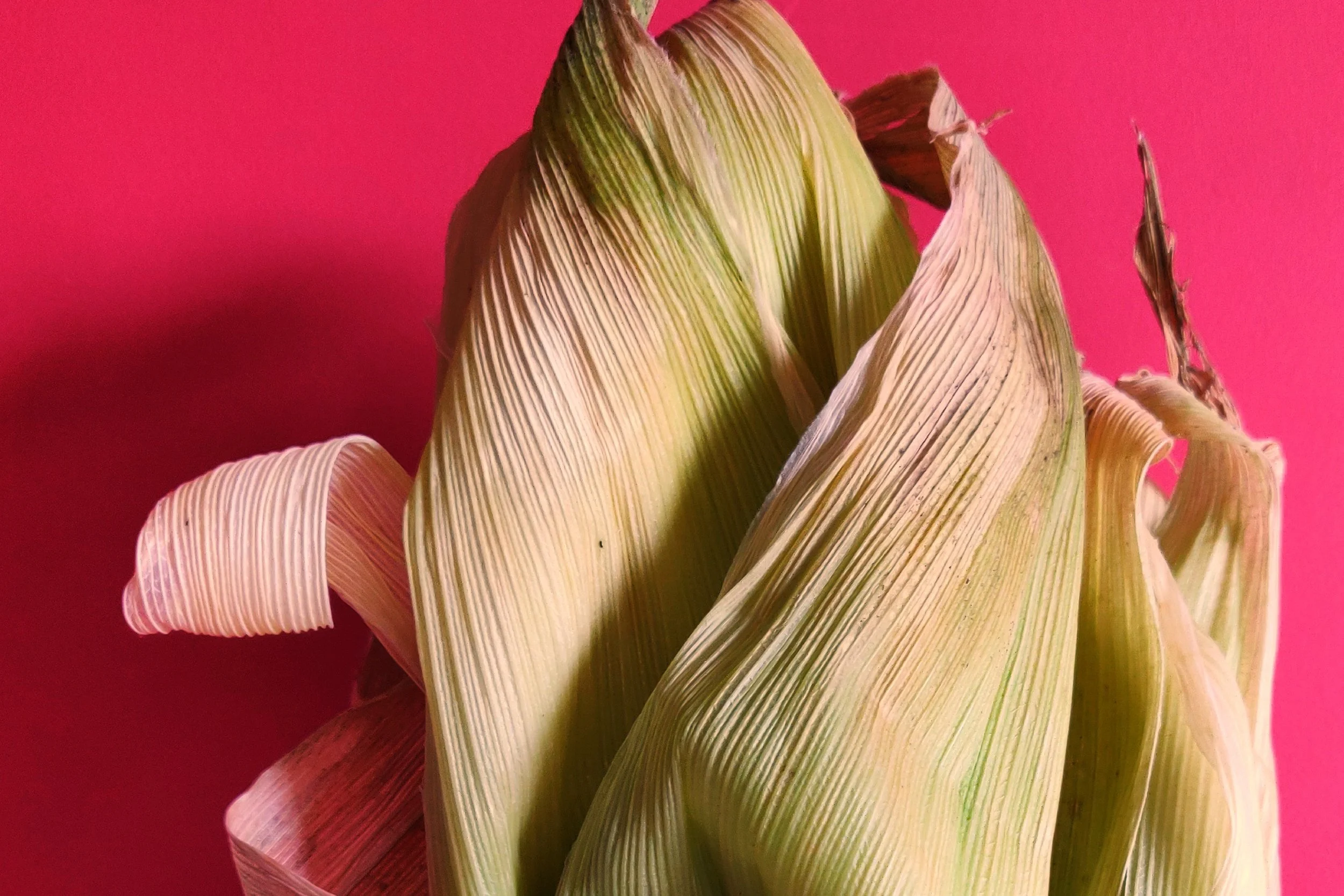
The Maize Project
Reimagining Waste and Reviving Craft ↓
Academic Project, Royal College of Art
How can we bridge sustainability, community, and design for a regenerative future?
Watch this video and scroll down further for more information on the project >>
WHAT
Transforming corn husks into a living material through a holistic systemic approach, bridging sustainability, community, and design to craft a regenerative and scalable future.
Context: In India, Maize (corn) is the third most important food crop after rice and wheat. This project repurposes this material (the husk) to eliminate damaging agricultural activities caused by burning it and see it as a valuable resource. It digs deeper into the lifecycle of corn, its processing, applications, stakeholders involved, and ecological impacts while working symbiotically with this natural system.
The project explores whether this material’s processing opens doors to being shaped for stability, permanence, and predictability.
Could smaller local communities be involved and financially reinvigorated by the bigger chain of processing and industrialisation of this material?
HOW
Phase 1: Small-scale material experiments reveal how local communities can actively engage in the material ecosystem, connecting sustainable practices with community-driven innovation.
This idea originated from integrating nature into homes through contemporary craft. It holds the potential to bridge the gap between craftsmen, consumers, and modern design in India by leveraging traditional skills and introducing a new, sustainable material for creating and selling contemporary designs.
The Possible System:
Reduces emission of harmful gases due to usual burning of waste husks (repurposing this material)
Additional source of income for farmers (a small step towards preventing farmer suicides)
Promotion and revival of the needlework and patchwork craft industry in India (for eg. Khatva crafts, Orissa) - generating sustainable livelihoods for craftsmen
Sustainable material sourcing and processing
Phase 2: Involving local communities in processing this material can prepare it for industrial use while fostering practical and scalable solutions through intuitive methods with live materials.
This eco-friendly alternative to paper and cardboard packaging is lightweight, biodegradable, and easily processed locally without heavy machinery, making it accessible to smaller communities. It is ideal for packaging products like gifts and glass bottles across India, for a circular system.
WHY
Burning corn husks contributes to environmental degradation, yet their potential as a sustainable material remains underutilized. Even though this material has been explored for many years now, I fail to understand why it is not used extensively. I aim to further understand how to upscale this project and design a market for it, challenging conventional approaches to material design.

























